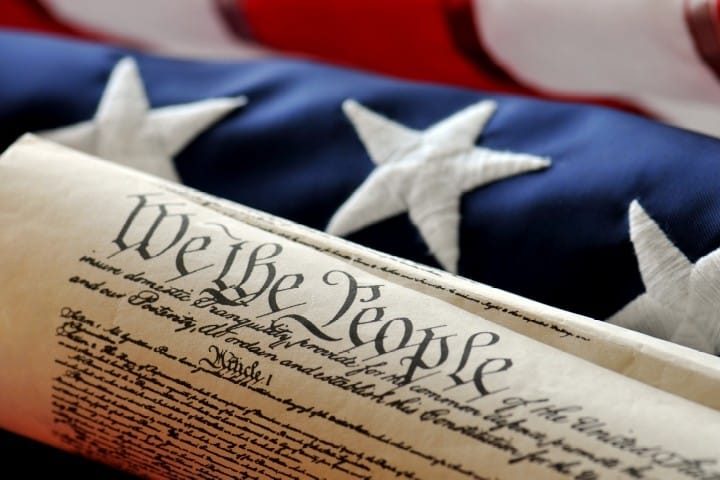
The year 2020 was marked by a historic level of executive overreach throughout the United States. Will 2021 see a historic movement to place power back in the hands of the legislatures?
State legislatures are pushing efforts to limit the unilateral powers of governors, largely in response to the far-reaching authority executives have exercised during the COVID-19 outbreak. These efforts touch on the question of how powerful governors should be during crises; their conclusion could have a long-lasting impact on the balance of state power.
The struggle between lawmakers and governors is particularly pronounced in states with divided governments, although even some states in which one party controls both branches are seeing tension between legislative and executive. Mask mandates and economic restrictions are among the issues fueling the contention.
In Pennsylvania, the Republican-run legislature, dissatisfied with Democrat Governor Tom Wolf, will ask primary voters next month to decide on constitutional amendments that would give the General Assembly power to end gubernatorial disaster declarations and require legislative approval for declarations that go beyond 21 days.
Meanwhile, in Kansas, lawmakers passed legislation to sunset Democrat Governor Laura Kelly’s COVID-19 executive orders and have rejected a statewide mask mandate.
In Arkansas, Republican Governor Asa Hutchinson signed a bill that gives the legislature greater power over his emergency authority and that of future governors.
In New York, the Democrat-controlled legislature took on their own party’s governor, Andrew Cuomo, by limiting his ability to put out new COVID-related orders. This comes as Cuomo is the subject of multiple scandals, such as his directive for nursing homes to take COVID-19 patients, leading to massive deaths, along with sexual-harassment claims against him.
Intra-party tug-of-war has also taken place in Ohio, where Republicans last month overrode GOP Governor Mike DeWine’s veto of a bill that gave emergency and health order decision-making powers to the legislature.
“We can’t leave it up to one person — no matter how much we like him or her — and everyone else who was elected has to sit on our hands,” said Ohio Senate President Matt Huffman in regard to the measures. “That’s not how it’s supposed to work in a republic.” Huffman had made it a priority to place more power in the hands of lawmakers when he assumed leadership of the state Senate in January.
Another Republican governor to fight back against attempts by his own party to curtail his power is Indiana Governor Eric Holcomb, who last Friday vetoed a bill that would empower the legislature to call itself into special sessions during emergencies in order to revoke gubernatorial edicts. Holcomb said he believed the provision was unconstitutional.
The veto override in Ohio marked the first time the legislature had successfully done so during DeWine’s governorship, which began in 2019. DeWine argued that the legislation “jeopardizes the safety” of residents and “handcuffs” the state’s ability to respond to crises.
Huffman brushed aside the governor’s concerns.
“It’s a bit of hyperbole to say people are going to die because of this because that presumes the legislature will collectively ignore that kind of risk,” the senate president said.
The movement to limit executive emergency powers has also reached into states where Republicans hold the governor’s mansion but Democrats control the legislature.
“We all want to make sure that the governor is able to act quickly in emergency situations, but we need to think about what constitutes an emergency,” said Massachusetts state Senator Diana DiZoglio, a Democrat who introduced a bill to limit the powers of Republican Governor Charlie Baker. “The governor has not signaled any intention of giving up his powers and the legislature has to be the check on the administration.”
In general, however, it has been Republican lawmakers who have moved to reduce the powers of their respective governors.
In Kentucky, Republicans targeted the powers of Democrat Governor Andy Beshear with a law that, among other things, would impose a 30-day limit on executive orders issued during a state of emergency unless ratified by the General Assembly, require permission of the attorney general before suspending existing statutes, and prohibit the governor from altering election laws during an emergency.
In some cases, the courts struck down governors’ emergency powers in lawsuits led by lawmakers. Such was the case in Wisconsin, where, at the end of March, the state’s Supreme Court nullified Governor Tony Evers’ ability to extend a statewide mask mandate when, by a 4-3 vote, it ruled that he violated state law by stringing together emergency declarations to lengthen the mandate without a greenlight from the GOP-dominated legislature.
Michigan lawmakers also have a path for a potential lawsuit after Democrat Governor Gretchen Whitmer vetoed legislation that would tie time limits on emergency orders issued by the state health department to nearly $350 million in COVID-19 testing funding.
State Senator Lana Theis, who sponsored the vetoed bill, said that “Executive fiat has not worked for Michigan.”
“We are supposed to be the voice of the people and we were elected to be that voice,” she added. “How long do you get to go with a unitary executive?”





